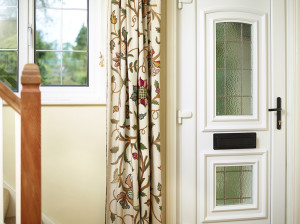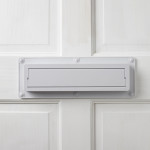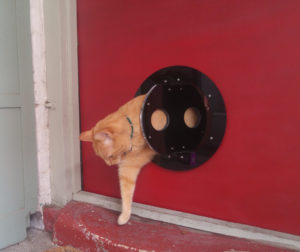What is the Minimum Energy Performance Standard (MEPS)?
Minimum Energy Performance Standard – not only a mouthful but set to be a headache too. MEPS is the aspect of the 2011 Energy Act intended to improve the energy efficiency of buildings in the private rented sector, both residential and non-residential. The minimum standard proposed is band E, as assessed by the Energy Performance Certificate of the property. The act set a deadline of April 2018 for these improvements to be made in England and Wales for new rental agreements, and suddenly that’s right around the corner. At the moment the regulations don’t apply to existing tenancies.
Reaching the Minimum Energy Performance Standard

Hereford Archives, a passivhaus non-residential building
There are a variety of ways depending on the state of the building and the stage of the building. Retrofit and best practice in maintenance will make a difference, as will a fabric first or even Passivhaus approach to new build. It’s very easy to focus on new build at the expense of retrofit, especially as the standard of new housing in the UK is woeful and it’s simpler to set out a clear standard for new builds, which can factor them in to financial and logistical planning, than it is for retrofit of existing housing stock of massively varying size, age, design and quality.
According to an article from IRT, 3 ways to maximise your portfolio energy performance (now no longer online), in London the new legislation will affect one in three buildings. The article goes on to reveal that most buildings do not, in practice, go on to perform as well as they should on paper, to some extent making a mockery of legislation:
Change of usage, extensions, refurbishments, dilapidations, cowboy buildings, adhoc maintenance, all contribute to a portfolio dataset that is far from perfect. Add in trying to meet legislative compliance on a shoestring budget and the whole thing goes pear-shaped very quickly.
Enforcing MEPS
Interestingly, the IRT article points out that banks can review commercial mortgages every two years, and they would be within their rights to pull the plug on arrangements covering a building that didn’t meet regulations or did so only on paper and could be proven not to meet the standards in reality. We’ve read in several articles that the legislation will be so overwhelming that it’s unlikely to be enforced to the letter and could become in effect voluntary unless strict adherence becomes unavoidable.
Ultimately this is likely to become a very sore point between potential tenants and landlords of existing low energy efficiency stock. Already it can feel that the landlords hold all the cards (if you’ve had any involvement with young adult offspring trying to rent a flat it’s definitely a landlord’s – and an agent’s – market: expensive, demoralising and undermining) and low enforcement risks amplifying that effect hugely as substandard privately-rented property becomes the preserve of those on the lowest incomes, while landlords can charge a premium for freshly retrofitted, MEPS-meeting properties.
Ethical landlords with a genuine interest in running their buildings to optimum energy efficiency may find they already meet MEPS, or can do with relatively minor improvements, and benefit alongside their tenants from a well-maintained portfolio and a happy and healthy tenant-landlord relationship. This a goal for everyone in the sector to aim for.


















